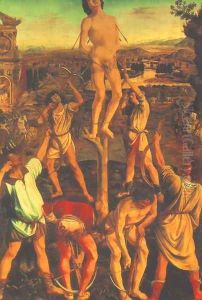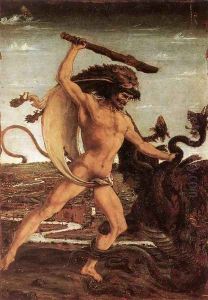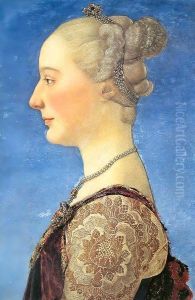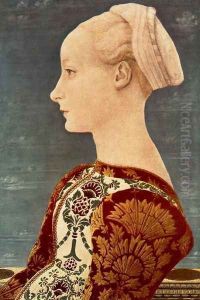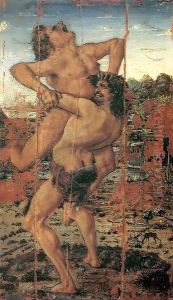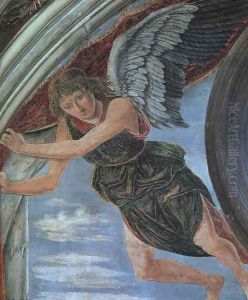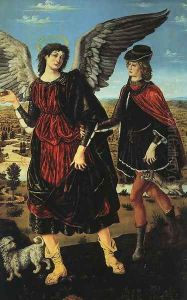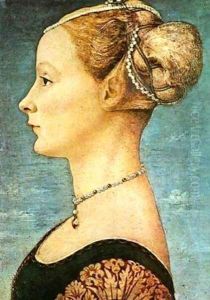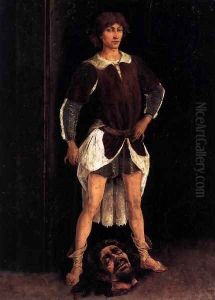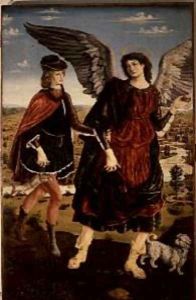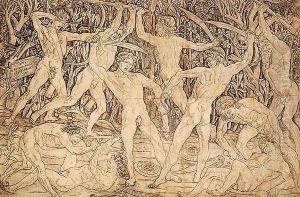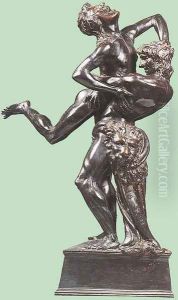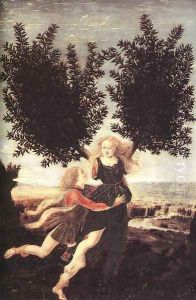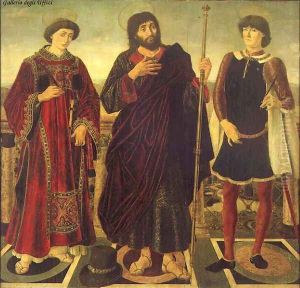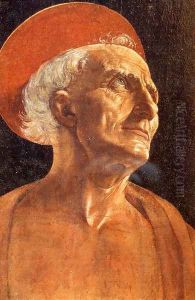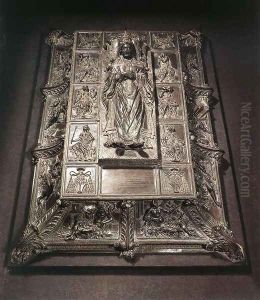Antonio Pollaiolo Paintings
Antonio del Pollaiuolo, born in Florence, Italy, in 1432, was an Italian Renaissance painter, sculptor, engraver, and goldsmith, known for his versatility and innovation in art. A prominent figure in the Florentine art scene, Pollaiuolo was deeply influenced by the energy and dynamism of human anatomy, which became a hallmark of his work. His fascination with the human form is evident in his detailed studies of muscles and movement, significantly contributing to the development of anatomical accuracy in Renaissance art.
Pollaiuolo received his initial training in goldsmithing, a common starting point for artists of his time, under the guidance of his father, who was also a goldsmith. This early exposure to the precision and intricacies required in metalwork deeply informed his approach to painting and sculpture. Pollaiuolo's works are characterized by their meticulous detail, vibrant energy, and bold use of perspective, which were innovative at the time and showcased his mastery over different mediums.
One of Pollaiuolo's most famous works is the 'Martyrdom of Saint Sebastian,' completed in 1475 for the Pucci Chapel in the church of SS. Annunziata in Florence. This painting is celebrated for its dramatic portrayal of the saint's execution, highlighting Pollaiuolo's interest in the human body under duress and his skill in depicting complex group compositions.
In addition to his contributions to painting and sculpture, Pollaiuolo was also a pioneer in the field of printmaking. He is credited with creating some of the earliest and most significant engravings in Italy, which helped disseminate his innovative approaches to anatomy and composition to a wider audience.
Pollaiuolo's influence extended beyond his lifetime, affecting the development of Italian art in significant ways. His work paved the way for future generations of artists to explore and depict the human body with greater realism and depth. Antonio del Pollaiuolo died in Rome in 1498, leaving behind a legacy that cemented his place as one of the key figures of the Italian Renaissance.
